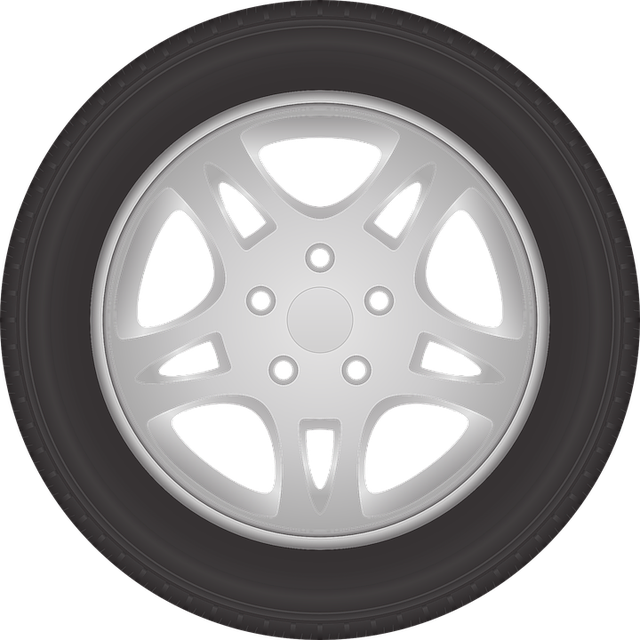Looking to register your car in California? This comprehensive guide walks you through the process, ensuring a smooth experience. First, understand the state’s unique registration requirements for vehicles. Then, gather essential documents for VIN (Vehicle Identification Number) verification, a crucial step in the process. Learn how to perform a VIN check and complete the registration, either online or in-person. Finally, pay the fees and receive your official California license plate.
- Understand California Car Registration Requirements
- Gather Necessary Documents for VIN Verification
- Perform Vehicle Identification Number (VIN) Check
- Complete Online or In-Person Registration Process
- Pay Registration Fees and Receive Your Plate
Understand California Car Registration Requirements

Before registering your car in California, it’s crucial to understand the state’s specific requirements. One essential step is ensuring proper vehicle identification number (VIN) verification. This process involves checking the VIN accuracy and history, which can be done through a mobile vin verifier or by conducting a vin inspection at a designated location.
California requires that vehicles meet certain criteria before registration, including emissions standards and safety regulations. Additionally, you’ll need to provide proof of insurance and pay associated fees. A mobile vin verification service can streamline this process by offering convenient, on-site VIN checks, making it easier for drivers to navigate the registration procedure in California.
Gather Necessary Documents for VIN Verification

Before you begin the registration process, it’s crucial to gather all the essential documents required for VIN verification in California. The Vehicle Identification Number (VIN) is a unique code that identifies your car and is critical for accurate record-keeping. For a seamless mobile vin inspection or vin verification process, ensure you have these key documents ready:
1. A valid registration certificate from the previous state where the vehicle was registered
2. Proof of ownership, which can be a title document or a bill of sale
3. A current and valid insurance card displaying your car’s information
4. Your driver’s license or state-issued ID card
5. The completed California Vehicle Registration Application form
Perform Vehicle Identification Number (VIN) Check

Before you begin the registration process, it’s crucial to perform a Vehicle Identification Number (VIN) check. This step is essential for ensuring that your vehicle’s history is clear and accurate. A VIN verification involves scanning the unique 17-character code on your car’s dashboard or under the hood. You can conduct this inspection using various methods, including a mobile vin verifier or even some online tools, which will provide you with detailed information about the vehicle’s past, such as its ownership history, accident records, and any outstanding recalls.
In California, accurate VIN inspection is more than just a recommendation; it’s often required by law. By utilizing a mobile vin verification service, you can conveniently check your car’s VIN from anywhere, making it easier to ensure that everything is in order before finalizing the registration. This simple step will help protect you from potential issues and ensure a smoother registration process for your California vehicle.
Complete Online or In-Person Registration Process

In California, registering your car involves either completing an online or in-person process, both of which require accurate information and necessary documents. The initial step includes verifying the Vehicle Identification Number (VIN) to ensure the vehicle’s authenticity and history. This process can be efficiently handled through a mobile VIN inspection service, allowing you to confirm the vehicle’s details from the comfort of your home or even while at a car dealership.
Once the VIN verification is complete, you’ll need to gather essential paperwork, including proof of ownership, driver’s license, insurance, and possibly a title transfer if applicable. For online registration, this information is submitted digitally, whereas in-person registration requires manual submission at a California Department of Motor Vehicles (DMV) office. Either way, ensure all details are correct to avoid delays or issues with your car’s registration.
Pay Registration Fees and Receive Your Plate

After completing your vehicle’s registration application, it’s time to settle the fees. The California Department of Motor Vehicles (DMV) will calculate the total cost based on factors like the type of vehicle and specific circumstances. You can typically pay online or at a local DMV office using a credit card, debit card, or personal check. Once your payment is processed, you’ll receive your registration documents, which include important information like your Vehicle Identification Number (VIN) and unique license plate.
Before taking to the roads, ensure that your vehicle’s VIN has been verified through a reliable service, such as those offered by mobile vin verifiers or inspectors. This crucial step involves cross-referencing your vehicle’s details against official databases to guarantee accuracy and prevent fraud. With your registration fees paid and VIN verification completed, you’re now officially ready to register your car in California with your new license plate attached.
Registering a car in California involves several straightforward steps, from understanding the state’s requirements for vehicle registration to completing the VIN verification process. By gathering all necessary documents, performing the VIN check, and either registering online or in-person, you can ensure your vehicle is legally registered and ready to hit the road. Remember, proper vehicle registration not only complies with California laws but also contributes to a safer driving environment for everyone.
